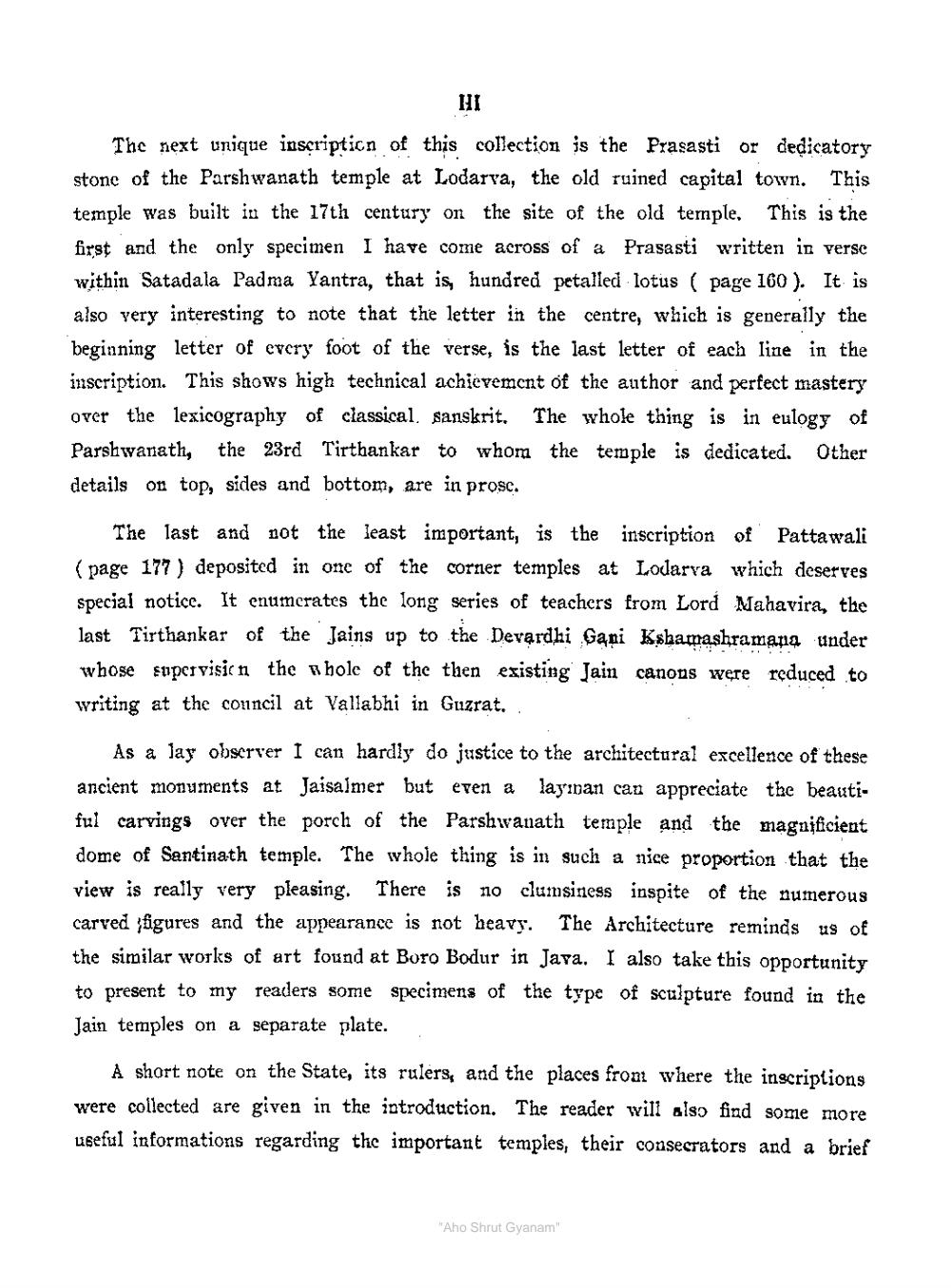________________
HI
The next unique inscripticn of this collection is the Prasasti or dedicatory stone of the Parshwanath temple at Lodarya, the old ruined capital town. This temple was built in the 17th century on the site of the old temple. This is the first and the only specimen I have come across of a Prasasti written in versc within Satadala Padma Yantra, that is, hundred petalled lotus ( page 160 ). It is also very interesting to note that the letter in the centre, which is generally the beginning letter of every foot of the verse, is the last letter of each line in the inscription. This shows high technical achievement of the author and perfect mastery over the lexicography of classical, sanskrit. The whole thing is in eulogy of Parshwanath, the 23rd Tirthankar to whom the temple is dedicated. Other details on top, sides and bottom, are in prosc.
The last and not the least important, is the inscription of Pattawali (page 177 ) deposited in one of the corner temples at Lodarra which deserves special notice. It enumerates the long series of teachers from Lord Mahavira, the last Tirthankar of the Jains up to the Devardhi Gani Kshamashramana under whose supervision the whole of the then existing Jain canons were reduced to writing at the council at Vallabhi in Guzrat.
As a lay observer I can hardly do justice to the architectural excellence of these ancient monuments at Jaisalmer but even a layınan can appreciate the beautiful carvings over the porch of the Parshwanath temple and the magnificient dome of Santinath temple. The whole thing is in such a nice proportion that the view is really very pleasing. There is no clumsiness inspite of the numerous carved figures and the appearance is not heavy. The Architecture reminds us of the similar works of art found at Boro Bodur in Java. I also take this opportunity to present to my readers some specimens of the type of sculpture found in the Jain temples on a separate plate.
A short note on the State, its rulers, and the places from where the inscriptions were collected are given in the introduction. The reader will also find some more useful informations regarding the important temples, their consecrators and a brief
"Aho Shrut Gyanam"




